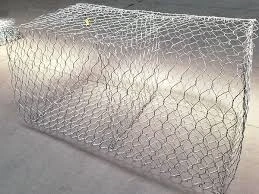-
 Phone:
Phone: -
 Email:
Email:

Durable Stainless Steel Bailing Wire for Various Applications and Heavy-Duty Use
Understanding Stainless Steel Bailing Wire Properties, Applications, and Benefits
Stainless steel bailing wire has become a crucial component in various industries due to its unique properties and versatility. This article explores the characteristics, applications, and benefits of using stainless steel bailing wire, emphasizing why it is preferred over other materials.
Properties of Stainless Steel Bailing Wire
Stainless steel bailing wire is made from a high-quality stainless steel alloy, which offers excellent resistance to rust and corrosion. This property makes it particularly suitable for environments where moisture is a factor, such as agricultural settings, construction sites, and even marine applications. The high tensile strength of stainless steel ensures that the wire can withstand significant weight and pressure without breaking or deforming, providing reliability in its various uses.
Another noteworthy property of stainless steel bailing wire is its elasticity. Unlike other materials that may become brittle over time, stainless steel maintains its flexibility, allowing for easy manipulation and use in different applications. Whether it needs to be twisted into a loop, tied off, or fastened securely, stainless steel bailing wire adapts well without losing its integrity.
Common Applications
Stainless steel bailing wire is employed across numerous industries due to its robust features. One of its primary applications is in the recycling and waste management sector. The wire is often used to tie bales of recycled materials, including cardboard, paper, plastic, and metal. Its strength ensures that these bales remain intact during transportation and storage, making it an essential component in the recycling process.
In the agricultural industry, stainless steel bailing wire is commonly used for tying up hay bales and securing plants or trees. Farmers appreciate its durability, knowing that it won't corrode or break down over time in outdoor settings. Additionally, its resistance to the elements ensures that crops remain protected during inclement weather.
Construction and industrial applications also benefit from the use of stainless steel bailing wire. It can be employed in scaffolding, fencing, and securing materials on job sites. Contractors value its strength and reliability, which contribute to the safety and efficiency of their projects.
stainless steel bailing wire

Moreover, stainless steel bailing wire is utilized in the manufacturing sector, particularly in the assembly of products and as a fastening solution. Its aesthetic appeal, combined with its functionality, makes it a widely accepted choice for various design and structural needs.
Benefits of Using Stainless Steel Bailing Wire
The advantages of stainless steel bailing wire are numerous. First and foremost, its resistance to corrosion means that it can be used in a variety of environments without the fear of deterioration. This durability translates to a longer lifespan for products and equipment, ultimately saving organizations money on replacements and repairs.
Secondly, the strength and flexibility of stainless steel bailing wire allow for a wide range of applications. Businesses can rely on it for both heavy-duty tasks and intricate designs, reducing the need to stock multiple types of wire. This versatility not only streamlines operations but also reduces inventory costs.
Additionally, stainless steel's aesthetic appeal cannot be overlooked. In industries where appearance matters, such as interior design and product packaging, stainless steel bailing wire provides a sleek, modern look that enhances the overall aesthetic of the finished product.
Lastly, the environmental benefits of stainless steel should be highlighted. As a recyclable material, stainless steel can be repurposed at the end of its life cycle, contributing to sustainability efforts across industries. This aspect is increasingly important as businesses strive to reduce their environmental impact and embrace eco-friendly practices.
Conclusion
In conclusion, stainless steel bailing wire is a vital material widely used across multiple industries due to its unique properties and versatile applications. Its resistance to rust and corrosion, combined with high tensile strength and flexibility, makes it an ideal choice for various tasks—from recycling and agriculture to construction and manufacturing. As businesses continue to prioritize durability and sustainability, the relevance of stainless steel bailing wire is likely to grow, reinforcing its position as a dependable material in countless applications.
-
Wire Mesh for Every Need: A Practical SolutionNewsJul.25,2025
-
Steel Fences: Durable, Secure, and Stylish OptionsNewsJul.25,2025
-
Roll Top Fencing: A Smart Solution for Safety and SecurityNewsJul.25,2025
-
Cattle Farm Fencing Solutions for Maximum SecurityNewsJul.25,2025
-
Affordable Iron Binding Wire SolutionsNewsJul.25,2025
-
Affordable Galvanized Wire SolutionsNewsJul.25,2025
-
Wire Hanger Recycling IdeasNewsJul.25,2025








